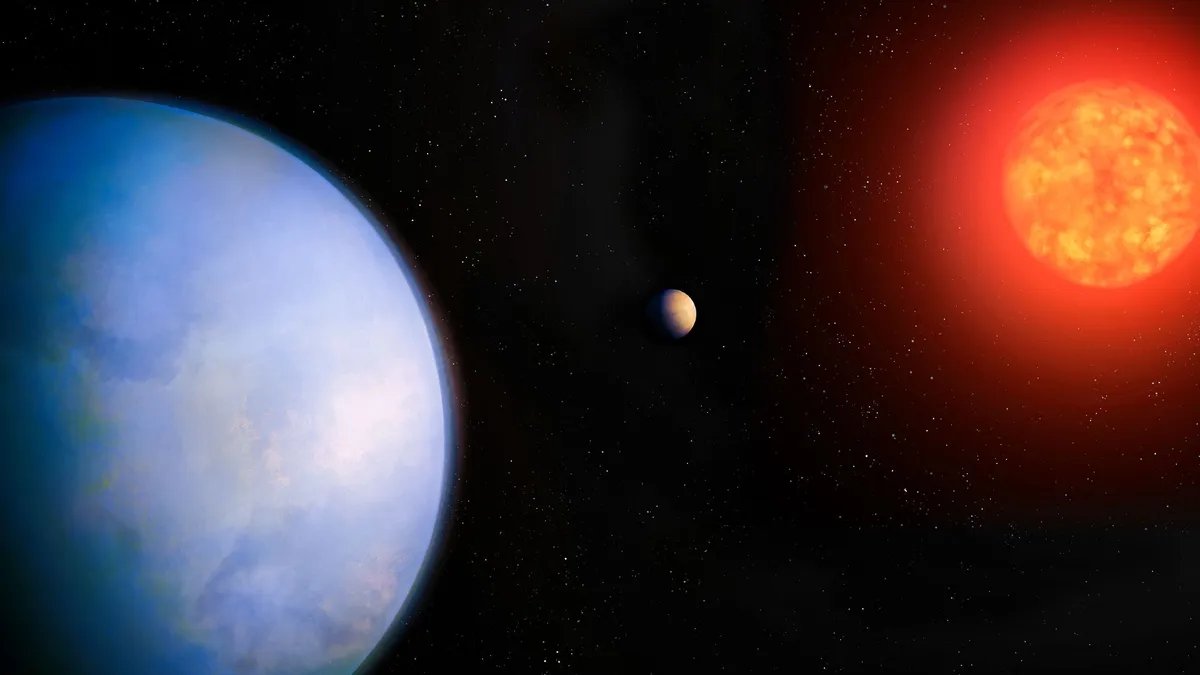
A groundbreaking discovery in the search for extraterrestrial life has been made with the detection of a super-Earth exoplanet, GJ 251c, located less than 20 light-years away. This exciting find positions GJ 251c near the top of the list of the best places to search for life beyond our solar system. The planet orbits a red dwarf star, situated 18.2 light-years away in the constellation of Gemini, often referred to as the Twins.
GJ 251c is classified as a 'super-Earth', boasting a mass that is four times greater than that of Earth. This classification indicates that it is a rocky planet larger and more massive than our own. While the presence of an atmosphere or life on GJ 251c has not yet been confirmed, it stands out as a promising target for future exploration, according to Suvrath Mahadevan, a professor of astronomy at Penn State University.
The planet resides in the habitable zone, often referred to as the Goldilocks zone, where conditions are just right for liquid water to exist on its surface if it possesses an appropriate atmosphere. This characteristic makes GJ 251c particularly intriguing for scientists and astronomers alike.
The discovery of GJ 251c is the result of over 20 years of meticulous observations. Scientists searched for a slight wobble in the parent star caused by the gravitational influence of the planet. This wobble results in a Doppler shift in the star's radial velocity, which can be measured using a spectrograph. The system also includes another known planet, GJ 251b, discovered in 2020, which orbits its star every 14 days at a distance of 7.6 million miles (12.2 million kilometers).
Utilizing archived data from telescopes worldwide, Mahadevan and his team were able to refine the accuracy of the radial velocity measurements for GJ 251b. They combined this refined data with new high-precision observations from the Habitable-Zone Planet Finder (HPF), a near-infrared spectrograph located on the Hobby-Eberly Telescope at McDonald Observatory in Texas. This collaborative effort revealed a second planetary signal linked to the four-Earth-mass world orbiting the star every 54 days, subsequently confirmed by measurements taken with the NEID spectrograph on the 3.5-meter WIYN telescope at Kitt Peak National Observatory in Arizona.
While the detection of GJ 251c may sound straightforward, the reality is that the challenge was formidable. Stars, including GJ 251, are constantly in turmoil, with convective bubbles and prominences creating a noisy background of asteroseismic activity. This activity manifests as Doppler shifted lines in the star's spectrum, complicating the task of isolating the signals indicative of a planet. Mahadevan notes the difficulty of distinguishing these subtle signals from the chaotic activity on the stellar surface, requiring extensive modeling to identify what a planetary signal should resemble.
With the discovery of GJ 251c, astronomers can now plan for future observations. However, the planet's distance from its star poses challenges for the James Webb Space Telescope (JWST) in searching for signs of an atmosphere. The next generation of 30-meter-class telescopes may be able to detect the planet's atmosphere by searching for light reflected off its surface or atmosphere. Yet, full characterization of GJ 251c is likely to require the Habitable Worlds Observatory, a planned giant space telescope expected to launch in the 2040s.
Despite being described as one of the best candidates for detecting an atmospheric signature of life, GJ 251c's host star presents a significant challenge. GJ 251 is a red dwarf with only 36% of the mass of our sun. Many rocky planets have been found in the habitable zones of red dwarfs, including Proxima Centauri b and TRAPPIST-1e and f. However, red dwarfs are notorious for their violent activity, frequently releasing powerful flares that can strip a planet of its atmosphere over time.
For instance, the JWST's observations of the inner three planets of TRAPPIST-1 found no evidence of an atmosphere, while results for the fourth planet, e, remain inconclusive. This has led some astronomers to question whether Earth-like worlds can thrive around red dwarfs. On the positive side, GJ 251c is positioned slightly farther from its star than many other habitable zone planets around red dwarfs, which may afford it some protection from these harsh conditions.
While it remains uncertain whether GJ 251c has successfully avoided the worst effects of its star's flares, and whether it possesses a thick atmosphere and strong magnetic field, Mahadevan emphasizes that there is still much to learn. “We made an exciting discovery,” he stated, “But there’s still much more to learn about this planet.” The findings regarding GJ 251c were reported on October 23 in The Astronomical Journal, marking a significant step in our understanding of potentially habitable worlds beyond our solar system.